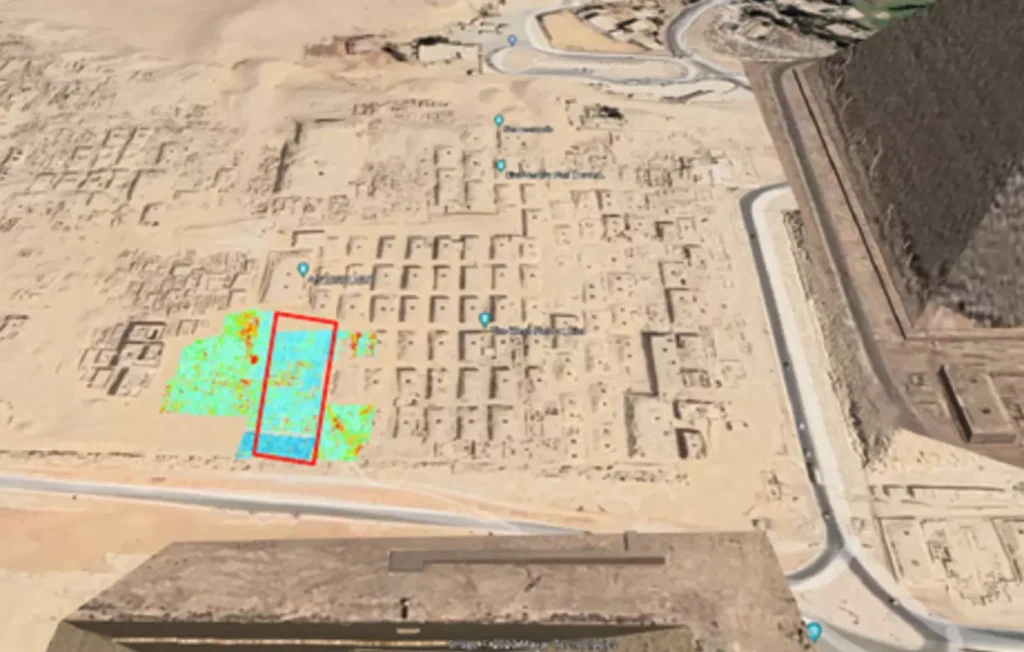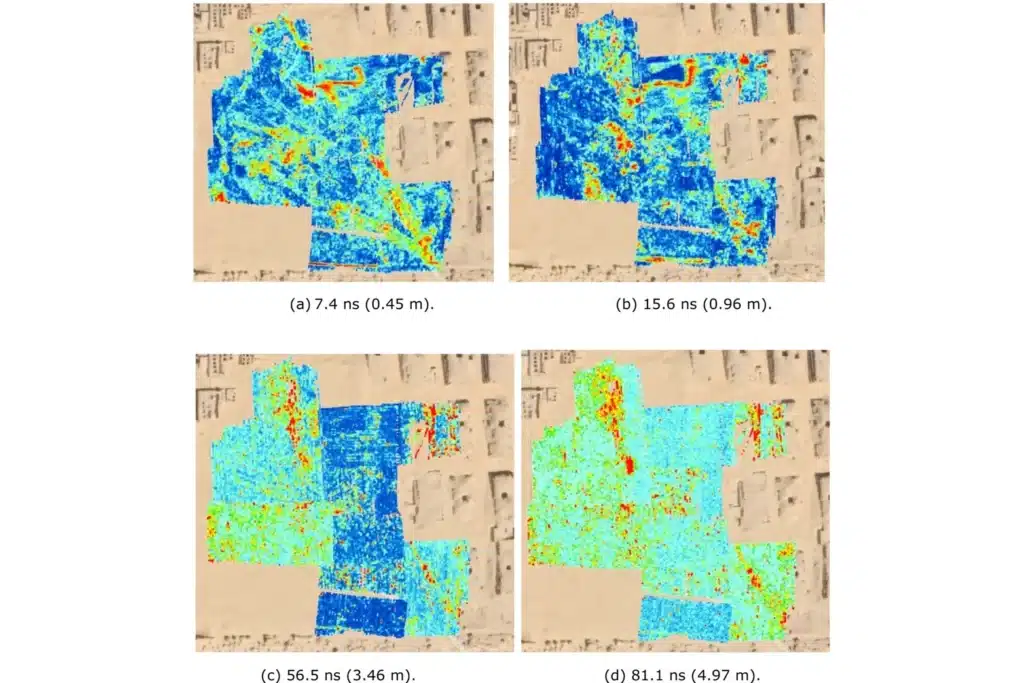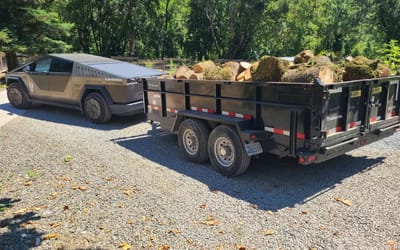Unknown structure found beneath sand near Great Pyramid of Giza in groundbreaking discovery
- A structure has been unearthed beside the Great Pyramid of Giza
- It’s been lying there undisturbed for 4,500 years
- There is a mysterious L-shaped structure with another ‘anomaly’ beneath
Published on May 15, 2024 at 11:48 AM (UTC+4)
by Amelia Jean Hershman-Jones
Last updated on May 16, 2024 at 11:10 AM (UTC+4)
Edited by
Tom Wood
A mysterious structure has been unearthed beside the Great Pyramid of Giza – and the structure has been lying there undisturbed for 4,500 years.
A mysterious L-shaped structure was buried beside the ancient monument – with another ‘anomaly’ beneath.
Archaeologists working in the area that’s a tourist favorite in Egypt found the structure without even breaking ground using new technology.
READ MORE! Dubai’s most ambitious megaproject was a futuristic pyramid designed to house 1m people
In recent times, fresh discoveries surrounding the Great Pyramid of Giza have been coming thick and fast.
They include writing on the top of the pyramids, a new discovery that uncovered how the pyramids were built, and a robot going inside to reveal a previously unseen passageway.
The position of the L-shaped structure and the other anomaly that was recently discovered suggests it could be a chamber leading to an area below.
An international team of researchers from Japan and Egypt were behind the find.
They were scanning the surface of Giza’s Western Cemetery with ground-penetrating technology when they spotted something they didn’t expect.
The Great Pyramid was actually the tomb of King Khufu with royal family members, nobles, and high-ranking officials buried nearby.
These people were usually laid to rest in ‘mastabas’, which were aboveground tombs with flat roofs.

One area in the center of the cemetery was surrounded by these mastabas, which seemed inexplicably empty.
Researchers investigated further between 2021 and 2023 and recorded their findings in Archaeological Prospection.
They used a technique called electrical resistivity tomography (ERT), which sends electrical currents into the ground to measure resistance and underlying features.
This was combined with ground-penetrating radar (GPR), which sends radar into the ground and uses the bounce-back to map below the ground.
The first anomaly was found two meters (6.5 ft) beneath the surface: an L-shaped structure measuring at least 10 meters (33 feet).
It ‘seems to have been filled with sand’, suggesting it was blocked off.
The deeper anomaly was ‘highly resistive’ – potentially a mix of sand and gravel, or simply an air void.
The researchers made a guess as to what it could have been but want to investigate further.

“The structure causing the anomalies could be vertical walls of limestone or shafts leading to a tomb structure,” they wrote in the journal.
An excavation is now underway, per Live Science.
They are confident that the structure is ‘too sharp’ to be naturally occurring.
Peter Der Manuelian, a professor of Egyptology at Harvard University, wasn’t involved in the study however he told Live Science that the structure has remained hidden because of the absence of ‘superstructures’ above ground.
He added that other L-shaped structures in Giza are usually ‘offering chapels’ but are found above ground.
“We believe that the continuity of the shallow structure and the deep large structure is important,” said the researchers of the historic find.
DISCOVER SBX CARS: The global premium car auction platform powered by Supercar Blondie

All Supercar Blondie contributors undergo editorial review and fact-checking to ensure accuracy and authority in automotive journalism. After gaining her BA Hons in French and English at the University of Nottingham, Amelia embarked on a vocational diploma from the National Council for the Training of Journalists (NCTJ). This led to numerous opportunities, from interning at Vogue to being on the small team that launched Women’s Health magazine in the UK, which was named the PPA Consumer magazine of the year for three years running. As Health, Beauty and Fitness editor, Amelia personally received a Johnson & Johnson Award and was shortlisted for both PPA and BSME titles. Since then, Amelia has created content for numerous titles and brands, including the Telegraph, 111 Skin, Waitrose, Red magazine, Stylist, and Elle, as well as being Head of Content at Vitality and Editor in Chief at INLondon magazine. “My superpower is translating technical jargon about the mechanical workings of a supercar into a relatable story you’ll want to share with your friends after you’ve read it.” After joining the SB Media family as a senior journalist in September of 2023, Amelia’s role has evolved to see her heading up the SEO output of the editorial team. From researching the most ‘Google-able’ key terms to producing evergreen content - it’s been a time of hard work, growth, and success for the editorial team and the Supercar Blondie website. “I like to think of myself as a ‘method journalist’. In other words: I live and breathe whatever I am writing about. When writing about fitness, I trained as a personal trainer, and as a beauty editor, I completed an ‘expert’ in scent diploma with the Fragrance Foundation. “During my tenure at Supercar Blondie, however, I did something I never thought possible: I passed my driving test at the age of 36. One day I’d love to train as a mechanic to better understand what happens under the hood, too. “My sweet spot is providing readers with a ‘takeaway’ (read: something new they didn’t know before) after reading every one of my stories. While I don’t claim to be an expert in the automotive world, I know the experts and bodies in the field to rely on to provide our readers with an informative and thought-provoking story every time they visit the site.”




